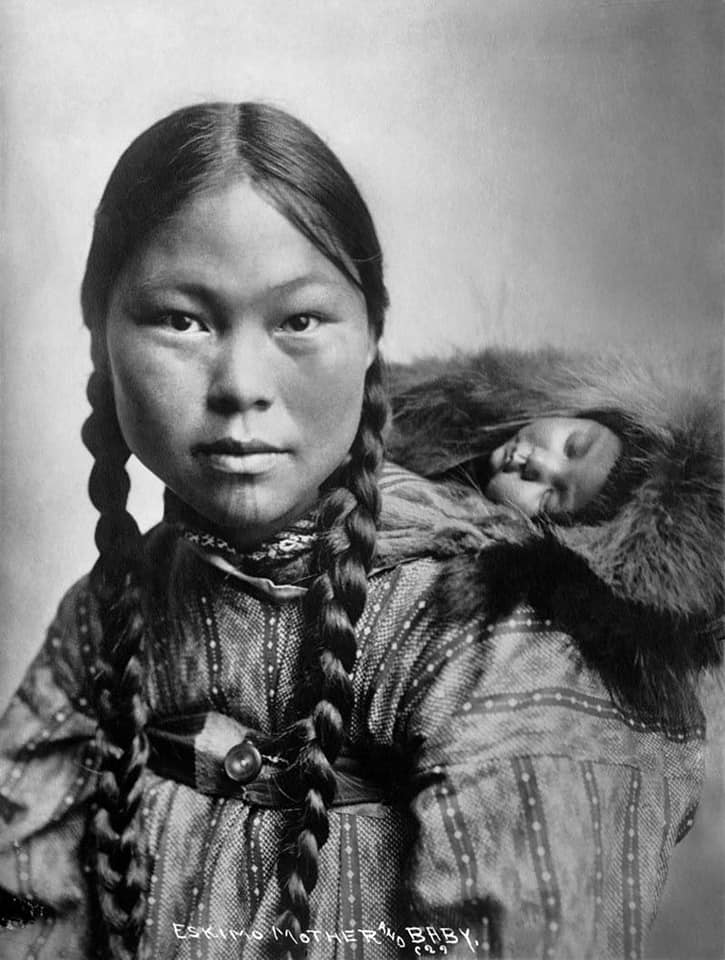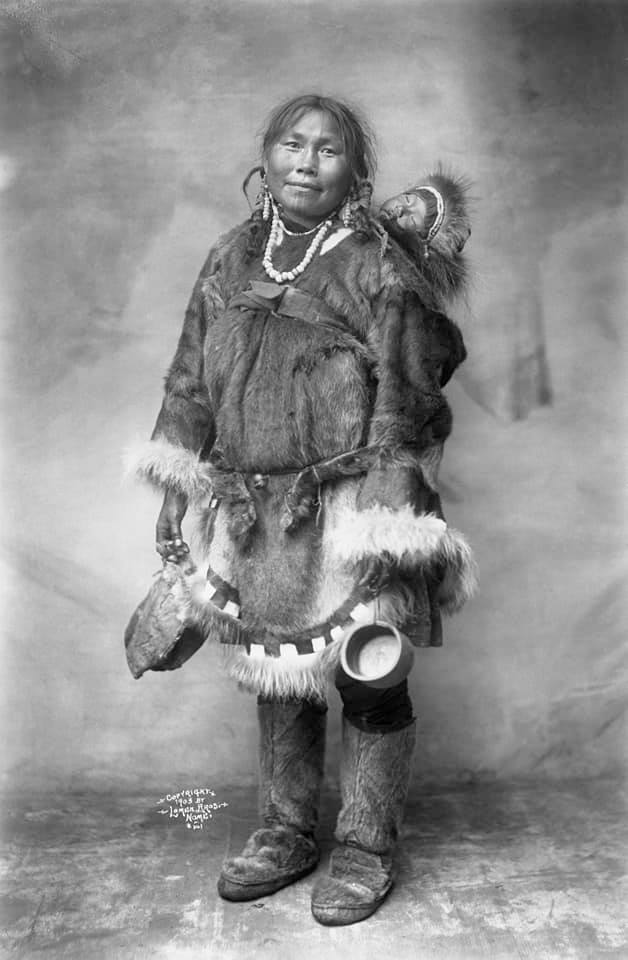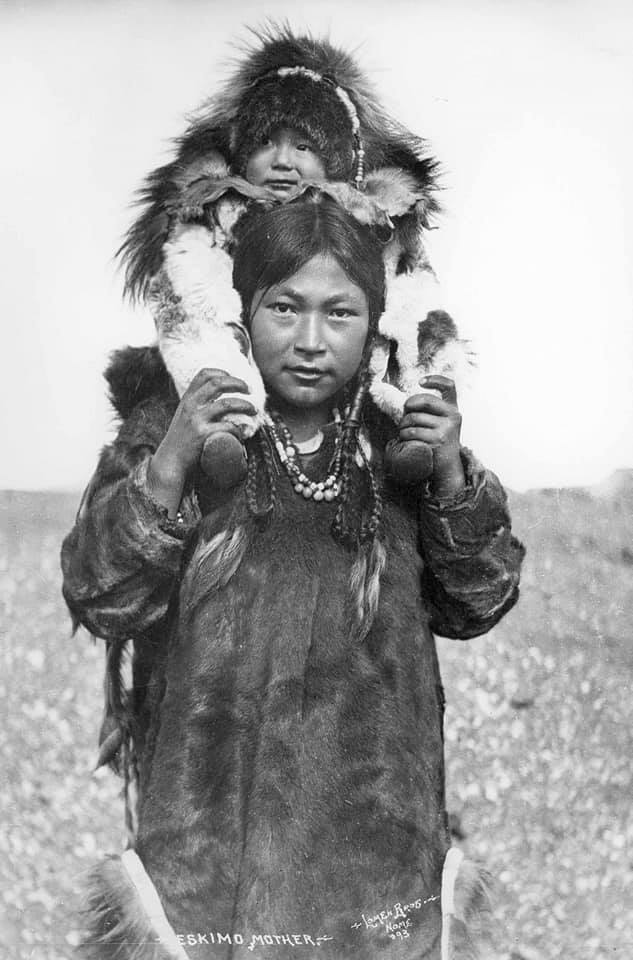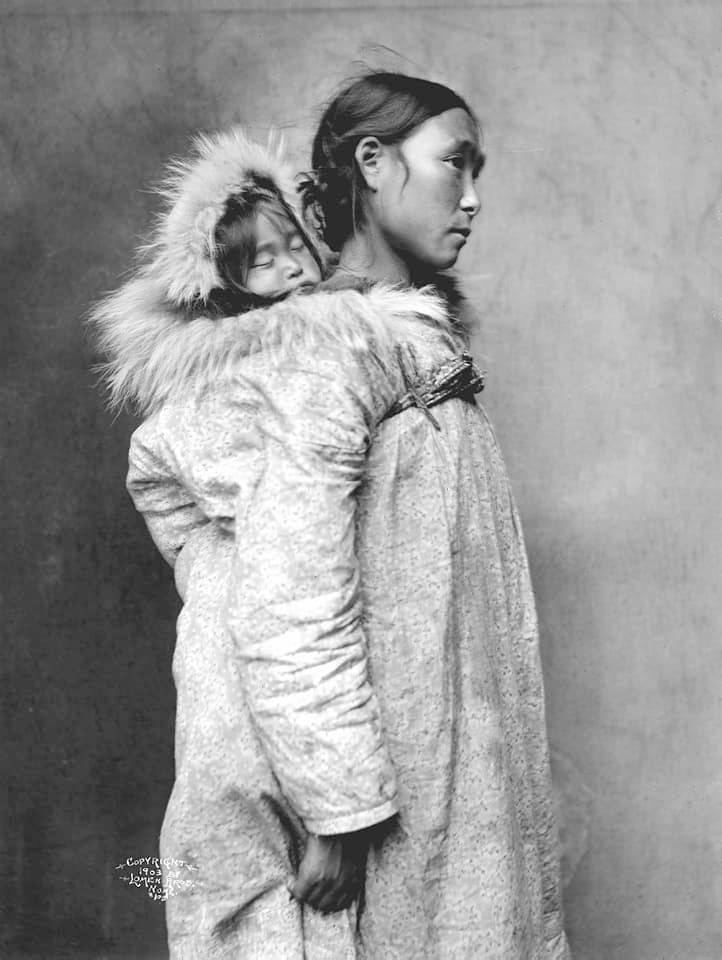Historical Documentery lmages and Brief History of Indigenous-Native American-First Nation Inuit-Eskimo Tribe
The Inuit, or Eskimo are aboriginal people who make their homes in the Arctic and subarctic regions of Siberia and North America. Inuit describes the various groups of indigenous peoples who live throughout Inuit Nunangat, that is the Inuvialuit Settlement Region of the Northwest Territories and Nunavut of Northern Canada, Nunavik in Quebec and Nunatsiavut in Labrador, as well as in Greenland. The term culture of the Inuit, therefore, refers primarily to these areas; however, parallels to other Eskimo groups can also be drawn.
The traditional lifestyle of the Inuit is adapted to extreme climatic conditions; their essential skills for survival are hunting and trapping. Agriculture was never possible in the millions of square kilometres of tundra and icy coasts from Siberia to Northern America including Greenland. Therefore, hunting became the core of the culture and cultural history of the Inuit. They used harpoons, bows and arrows, and to take down animals of all sizes. Thus, the everyday life in modern Inuit settlements, established only some decades ago, still reflects the 5,000-year-long history of a hunting culture which allowed the Inuit peoples and their ancestors to achieve one of the most remarkable human accomplishments, the population of the Arctic.
The word Eskimo is thought to come from Innu-aimun (Montagnais) ayas̆kimew meaning “a person who laces a snowshoe” and is related to “husky” (a breed of dog), and does not have a pejorative meaning in origin.

In Canada and Greenland, the term “Eskimo” is predominantly seen as pejorative and has been widely replaced by the term “Inuit” or terms specific to a particular group or community. This has resulted in a trend whereby some Canadians and Americans believe that they should not use the word “Eskimo” and use the Canadian word “Inuit” instead, even for Yupik people. Many consider Eskimo to be a derogatory term due to the common usage of the term by racist colonizers; the word itself possibly translates to “eater of raw meat,” which is seen as violent and perhaps barbaric. Section 25 of the Canadian Charter of Rights and Freedoms and section 35 of the Canadian Constitution Act of 1982, recognized the Inuit as a distinctive group of Aboriginal peoples in Canada.
Under U.S. and Alaskan law (as well as the linguistic and cultural traditions of Alaska), “Alaska Native” refers to all indigenous peoples of Alaska. This includes not only the Iñupiat (Alaskan Inuit) and the Yupik, but also groups such as the Aleut, who share a recent ancestor, as well as the largely unrelated indigenous peoples of the Pacific Northwest Coast and the Alaskan Athabaskans. As a result, the term Eskimo is still in use in Alaska. Alternative terms, such as Inuit-Yupik, have been proposed, but none has gained widespread acceptance. Recent (early 21st century) population estimates registered more than 135,000 individuals of Eskimo descent, with approximately 85,000 living in North America, 50,000 in Greenland, and the rest residing in Siberia.
The non-Inuit sub-branch of the Eskimo branch of the Eskimo-Aleut language family consists of four distinct Yupik languages, two used in the Russian Far East and St. Lawrence Island, and two used in western Alaska, southwestern Alaska, and the western part of Southcentral Alaska. The extinct language of the Sirenikpeople is sometimes argued to be related to these.
The word “Eskimo” comes from the Montagnais word for “snowshoe-netter” according to scholars at the Smithsonian Institution. The governments in Canada and Greenland have ceased using it in official documents. Instead, Canada officially uses to term “Inuit” to describe the native people living in the country’s northernmost sector. The ICC voted to substitute the word Eskimo with Inuit in 1977.

Inuit (/ˈɪnjuɪt/; Inuktitut: ᐃᓄᐃᑦ, “the people”, singular: Inuk ᐃᓄᒃ, dual: Inuuk ᐃᓅᒃ are a group of culturally similar indigenous peoples inhabiting the Arctic regions of Greenland, Canada and Alaska (United States).
The Inuit languages are part of the Eskimo–Aleut family.Inuit Sign Language is a critically endangered language isolate used in Nunavut.
Inuit live throughout most of Northern Canadain the territory of Nunavut, Nunavik in the northern third of Quebec, Nunatsiavut and NunatuKavut in Labrador, and in various parts of the Northwest Territories, particularly around the Arctic Ocean, in the Inuvialuit Settlement Region. With the exception of NunatuKavut these areas are known in the Inuit languages as Inuit Nunangat. In Canada, sections 25 and 35 of the Constitution Act of 1982 classify Inuit as a distinctive group of Aboriginal Canadians who are not included under either the First Nations or the Métis.

The Greenlandic Inuit are descendants of ancient indigenous migrations from Canada, as these people migrated to the east through the continent. Inuit of Denmark are Danish citizens, although not the citizens of the European Union. In the United States, the Alaskan Iñupiat, live primarily on the Alaska North Slope and on Little Diomede Island.
In Canada and the United States, the term “Eskimo” was commonly used to describe Inuit, and Siberia and Alaska’s Yupik, Iñupiat, and Chukchi people. However, “Inuit” is not accepted as a term for the Yupik and Chukchi, and “Eskimo” is the only term that applies to Yupik, Chukchi, Iñupiat and Inuit. Since the late 20th century, Indigenous peoples in Canadaand Greenlandic Inuit consider “Eskimo” to be a pejorative term, and they more frequently identify as “Inuit” for an autonym
Inuit speak Inuinnaqtun, Inuktitut, Inuvialuktun, and Greenlandic languages, which belong to the Inuit-Inupiaq branch of the Eskimo–Aleut language family. The Greenlandic languages are divided into: Kalaallisut (Western), Inuktun (Northern), and Tunumiit (Eastern).

Inuktitut is spoken in Canada and along with Inuinnaqtun is one of the official languages of Nunavut; they are known collectively as the Inuit Language. In the Northwest Territories, Inuvialuktun, Inuinnaqtun and Inuktitut are all official languages. Kalaallisut is the official language of Greenland. As Inuktitut was the language of the Eastern Canadian Inuit and Kalaallisut is the language of the Western Greenlandic Inuit, they are related more closely than most other dialects.
Inuit in Alaska and Northern Canada also typically speak English. In Greenland, Inuit also speak Danish and learn English in school. Canadian Inuit may also speak Québécois French.
Finally, Deaf Inuit speak Inuit Sign Language, which is a language isolate and almost extinct as only around 50 people still speak it.(via-wikipedia)
Hits: 8


